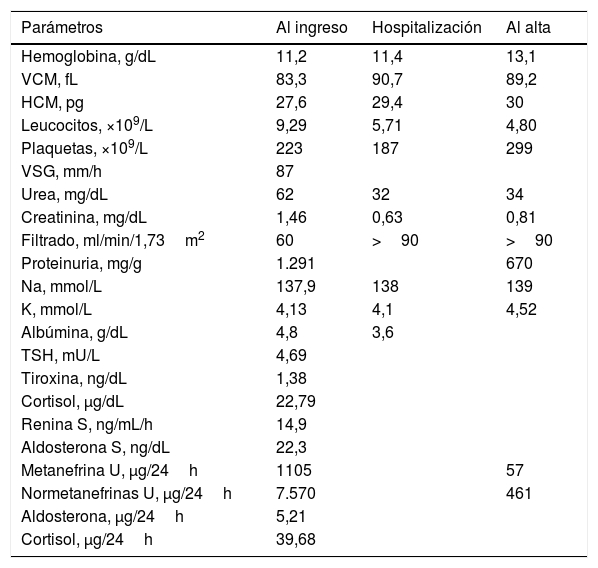La hipertensión arterial maligna se define por cifras extremadamente altas de presión arterial asociadas a daño orgánico. Constituye una causa de emergencia hipertensiva donde coexisten cifras elevadas de presión arterial, con hemorragia y exudados bilaterales retinianas (retinopatía hipertensiva grado III), con o sin papiledema (retinopatía hipertensiva grado IV), asociada usualmente a lesión renal o cardíaca. En un 1% de los casos es secundaria a causas endocrinológicas, entre ellas, la más frecuente: el feocromocitoma, que clásicamente se ha caracterizado por la tríada cefalea, sudoración y palpitaciones. Sin embargo, no existe un hallazgo clínico único que tenga un valor significativo en su diagnóstico. A continuación, presentamos el caso de una paciente de 23 años con emergencia hipertensiva y masa suprarrenal asociado a retinopatía hipertensiva grado IV.
Malignant arterial hypertension is defined by extremely high levels of pressure associated with organ damage. It is a cause of hypertensive emergency and is defined by the coexistence of high blood pressure and bilateral retinal haemorrhage or exudates (grade III hypertensive retinopathy), with or without papilloedema (grade IV hypertensive retinopathy) currently associated with organ damage such as renal or cardiac failure. Around 1% of malignant arterial hypertension is secondary to endocrinological causes, including the most common: pheochromocytoma, which is classically characterized by the triad: headache, sweating and palpitations. However, there is no single clinical finding that is of significant value in its diagnosis. We now present the case of a 23-year-old patient with a hypertensive emergency, an adrenal mass associated with grade IV hypertensive retinopathy.









